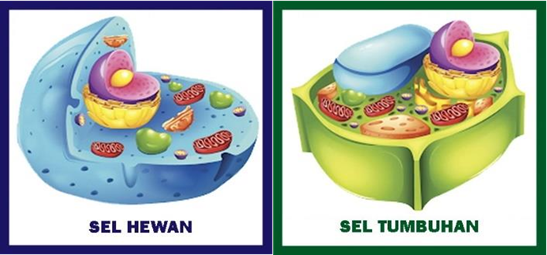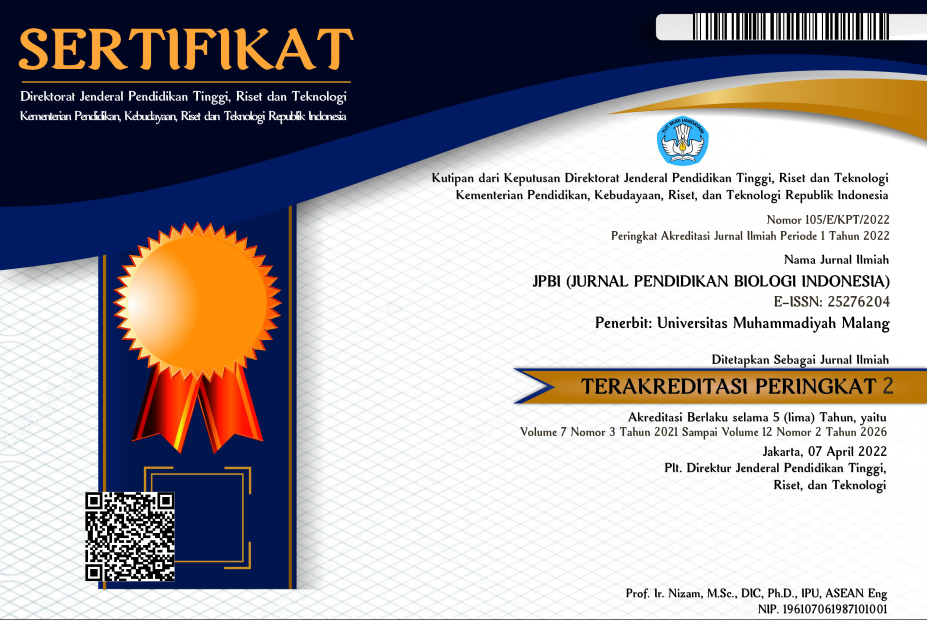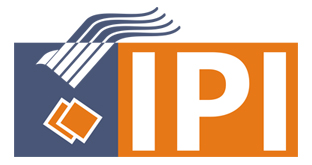Virtual tour based in augmented reality as a biology learning media
DOI:
https://doi.org/10.22219/jpbi.v10i3.36578Keywords:
Cell Organelles, IMSDD, Virtual tour, augmented-reality, biology learning mediaAbstract
This study aims to see the validity and practicality of augmented reality-based virtual tour biology learning media. Media was developed specifically for the introduction of cell organelles. This research applies Research and Development research and uses the Interactive Multimedia System Design and Development method as the system development method. The steps for developing IMSDD are system requirements, design considerations, implementation and evaluation. The research was conducted at MAN Palopo with research subjects of eleventh class of math and science with 24 students in total. Data collection techniques include observation, interviews and questionnaires using interview guide instruments, observation sheets and questionnaire sheets. Data analysis techniques are carried out qualitatively and quantitatively. The research results (1) The validity of media after going through the validation test stage by the two experts, namely 96.16% is in the valid category, (2) The results of the practicality test by students obtained results of 87.83% in the very practical category, while the results of the practicality test by the teacher obtained a result of 96% in the very practical category. The presence of augmented reality-based virtual tour media in the introduction of cell organelle material is able to facilitate students in recognizing each microscopic cell organelle so that it appears real. The use of Augmented Reality based virtual tours in learning allows students to learn independently outside the classroom and can increase the learning experience to be more interactive and interesting for students.
Downloads
References
Adesti, A., & Nurkholimah, S. (2020). Pengembangan media pembelajaran berbasis android menggunakan aplikasi Adobe Flash CS 6 pada mata pelajaran sosiologi. Edutainment: Jurnal Ilmu Pendidikan Dan Kependidikan, 8(1), 27–38. https://doi.org/10.35438/e.v8i1.221
Agustin, A., & Wardhani, H. A. K. (2023). Pengaruh media augmented reality (AR) berbantuan Assemblr Edu terhadap hasil belajar siswa SMP IT Robbani Sintang. Edumedia: Jurnal Keguruan Dan Ilmu Pendidikan, 7(2), 7–13. https://doi.org/10.51826/edumedia.v7i2.952
Ahmadi, R. A., Adler, J., & Ginting, S. L. (2017). Teknologi augmented reality sebagai media pembelajaran gerakan shalat. Prosiding Seminar Nasional Komputer Dan Informatika (SENASKI), 2017, 978–602. https://ojs.unikom.ac.id/index.php/senaski/article/view/940
Allcoat, D., & von Mühlenen, A. (2018). Learning in virtual reality: Effects on performance, emotion and engagement. Research in Learning Technology, 26(1063519), 1–13. https://doi.org/10.25304/rlt.v2 6.2140
Arifah, M. N., Munir, M. A., & Nudin, B. (2021). Educational design for alpha generation in the industrial age 4.0. Proceedings of the 2nd Southeast Asian Academic Forum on Sustainable Development (SEA-AFSID 2018), 168, 137–145. https://doi.org/10.2991/aebmr.k.210305.026
Astuti, I. A. D., Dasmo, D., & Nurullaeli, N. (2018). The impact of pocket mobile learning to improve critical thinking skills in physics learning. Journal of Physics: Conference Series, 1114(1), 80–86. https://doi.org/10.1088/1742-6596/1114/1/012030
Billinghurst, M., Clark, A., & Lee, G. (2015). A survey of augmented reality. In Foundations and Trends® in Human–Computer iIteraction (Vol. 8, Issue 3). https://doi.org/10.1561/1100000049
Bretos, M. A., Ibáñez-Sánchez, S., & Orús, C. (2024). Applying virtual reality and augmented reality to the tourism experience: a comparative literature review. Spanish Journal of Marketing - ESIC, 28(3), 287–309. https://doi.org/10.1108/SJME-03-2023-0052
Buheji, M., & Ahmed, D. (2020). Foresight of Coronavirus (COVID-19) opportunities for a better world. American Journal of Economics, 10(2), 97–108. https://doi.org/10.5923/j.economics.20201002.05
Churiyah, M., Subagyo, S., Basuki, A., Dharma, B. A., Filanti, F., & Sakdiyyah, D. A. (2020). Mobile learning application berbasis android: Peran guru dalam pembelajaran peserta didik Gen Z & Alfa. Jurnal Graha Pengabdian, 2(4), 283–295. https://doi.org/10.17977/um078v2i42020p283-295
Dash, A. K., Behera, S. K., Dogra, D. P., & Roy, P. P. (2018). Designing of marker-based augmented reality learning environment for kids using convolutional neural network architecture. Displays, 55, 46–54. https://doi.org/10.1016/j.displa.2018.10.003
Dastbaz, M. (2002). Designing interactive multimedia systems (Issue February 2014). https://www. salonnumeriquegabon.campusfrance.org/textbooks/scholarship/filedownload.ashx/designing_interactive_multimedia_systems.pdf%0A
Demircioglu, T., Karakus, M., & Ucar, S. (2022). Developing students’ critical thinking skills and argumentation abilities through augmented reality-based argumentation activities in science classes. Science & Education, 32, 1–31. https://doi.org/10.1007/s11191-022-00369-5
Dianta, A. F., Darmawan, Z. M. E., Akbar, Z. F., & Fathoni, K. (2021). Pengembangan aplikasi virtual tour sebagai media pengenalan lingkungan kampus PENS berbasis website. Jurnal Teknologi Terpadu, 7(1), 23–30. https://doi.org/10.54914/jtt.v7i1.341
Ghufron, M. . (2018). Revolusi Industri 4.0: Tantangan, peluang, dan solusi bagi dunia pendidikan. Seminar Nasional dan Diskusi Panel Multidisiplin Hasil Penelitian Dan Pengabdian Kepada Masyarakat 2018, 1(1), 332–337. https://proceeding.unindra.ac.id/index.php/dispanas2018/article/ view/73
Hastini, L. Y., Fahmi, R., & Lukito, H. (2020). Apakah pembelajaran menggunakan teknologi dapat meningkatkan literasi manusia pada Generasi Z di Indonesia? Jurnal Manajemen Informatika (JAMIKA), 10(1), 12–28. https://doi.org/10.34010/jamika.v10i1.2678
Hikmawan, R., & Sofiani, Y. (2021). Implementasi media virtual tour berbantuan e-handout pada pembelajaran sejarah di kelas XI MIPA 6 SMAN 2 Tasikmalaya. In Jurnal Pendidikan Sejarah dan Ilmu Sejarah (Vol. 4, Issue 1, pp. 22–30). https://jurnal.unsil.ac.id/index.php/bihari/article/view/ 3124/1775
Husna, M., Simanungkalit, E., & Faulina, F. (2021). Pembuatan virtual tour sebagai sarana pembelajaran program studi MICE. Klik - Kumpulan Jurnal Ilmu Komputer, 8(1), 99. https://doi.org/10.20527/klik. v8i1.375
Khairunnissa, N. H., Akbar, M., & Sauda, S. (2020). Development of gate game applications using the IMSDD method. Journal of Information Systems and Informatics, 2(1), 1–11. https://doi. org/10.33557/journalisi.v2i1.27
Kusumaningtyas, R., Sholehah, I. M., & Kholifah, N. (2020). Peningkatan kualitas pembelajaran guru melalui model dan media pembelajaran bagi Generasi Z. Warta LPM, 23(1), 54–62. https:// doi.org/10.23917/warta.v23i1.9106
Markowitz, D. M., Laha, R., Perone, B. P., Pea, R. D., & Bailenson, J. N. (2018). Immersive virtual reality field trips facilitate learning about climate change. Frontiers in Psychology, 9. https://doi.org/ 10.3389/fpsyg.2018.02364
Mellisa, M., & Ifatrizah, I. (2022). Analisis kesulitan belajar siswa kelas XII IPA SMA Negeri 9 Mandau Duri pada materi reproduksi sel. Biology and Education Journal, 2(2), 22–35. https://doi.org/ 10.25299/baej.2022.11064
Nasongkhla, J., Supadaec, C., & Chiasiriphan, T. (2019). Implementing multiple AR markers in learning science content with Junior High School students in Thailand. International Journal of Emerging Technologies in Learning, 14(7), 48–60. https://doi.org/10.3991/ijet.v14i07.9855
Norregaard, K., Metzler, R., Ritter, C. M., Berg-Sørensen, K., & Oddershede, L. B. (2017). Manipulation and motion of organelles and single molecules in living cells. Chemical Reviews, 117(5), 4342–4375. https://doi.org/10.1021/acs.chemrev.6b00638
Ratminingsih, & Subiantoro, A. W. (2023). Development of mangrove ecosystem e-encyclopedia as learning sources to improve information literacy skills and environmental care attitudes of students. Jurnal Inovasi Pendidikan IPA, 9(1), 1–12. https://doi.org/10.21831/jipi.v8i1.48028
Rivai, A., Astuti, I. A. D., Okyranida, I. Y., & Asih, D. A. S. (2021). Pengembangan media pembelajaran fisika berbasis android menggunakan Appypie dan Videoscribe pada materi momentum dan impuls. Journal of Learning and Instructional Studies, 1(1 SE-Articles), 9–16. https://doi.org/10.466 37/jlis.v1i1.2
Roeder, A. H. K., Otegui, M. S., Dixit, R., Anderson, C. T., Faulkner, C., Zhang, Y., Harrison, M. J., Kirchhelle, C., Goshima, G., Coate, J. E., Doyle, J. J., Hamant, O., Sugimoto, K., Dolan, L., Meyer, H., Ehrhardt, D. W., Boudaoud, A., & Messina, C. (2022). Fifteen compelling open questions in plant cell biology. Plant Cell, 34(1), 72–102. https://doi.org/10.1093/plcell/koab225
Sugiana, D., & Muhtadi, D. (2019). Augmented reality type QR Code: Pengembangan perangkat pembelajaran di era revolusi industri 4.0. Prosiding Seminar Nasional, 135–140. https://jurnal.unsil .ac.id/index.php/sncp/article/download/1034/694%0A
Sugiarto, S., & Farid, A. (2023). Literasi digital sebagai jalan penguatan pendidikan karakter di era society 5.0. In Cetta: Jurnal Ilmu Pendidikan (Vol. 6, Issue 3, pp. 580–597). https://doi.org/10.37329/cetta. v6i3.2603
Sylvia, F., Ramdhan, B., & Windyariani, S. (2020). Efektivitas augmented reality terhadap higher order thinking skills siswa pada pembelajaran biologi. Biodik, 7(2), 131–142. https://doi.org/10.22437/bio. v7i2.13034
Wibowo, T. U. S., Maryuni, Y., Nurhasanah, A., & Willdianti, D. (2020). Pemanfaatan virtual tour museum (VTM) dalam pembelajaran sejarah di masa pandemi Covid-19. Prosiding Seminar Nasional Pendidikan FKIP, 3(1), 402–408. https://jurnal.untirta.ac.id/index.php/psnp/article/viewFile/9960/ 6471%0A
Widyaningrum, H. K., Pratiwi, C. P., Menggala, A. D., Hasanudin, C., & Fitrianingsih, A. (2022). Android Application Appy pie to support students writing stories skill through flipped classroom learning models. International Journal on Advanced Science, Engineering and Information Technology, 12(2), 530–538. https://doi.org/10.18517/ijaseit.12.2.12719
Wulur, H. W., Sentinuwo, S., & Sugiarso, B. (2015). Aplikasi virtual tour tempat wisata alam di Sulawesi Utara. Jurnal Teknik Informatika, 6(1), 1–6. https://doi.org/10.35793/jti.6.1.2015.9953
Yazici, F., & Sözbilir, M. (2024). Designing and evaluation of 3D materials for teaching biological systems to 6th grade students with visual impairment (SVI). In Journal of Biological Education (Vol. 58, Issue 2, pp. 460–482). https://doi.org/10.1080/00219266.2022.2072363
Zhang, W. (2021). Theory and practice of VR_AR in K-12 science education—A systematic review. https://doi.org/10.3390/su132212646 Academic

Downloads
Published
Issue
Section
License

This work is licensed under a Creative Commons Attribution-ShareAlike 4.0 International License.
Authors who publish with JPBI (Jurnal Pendidikan Biologi Indonesia) agree to the following terms:
- For all articles published in JPBI, copyright is retained by the authors. Authors give permission to the publisher to announce the work with conditions. When the manuscript is accepted for publication, the authors agree to automatic transfer of the publishing right to the publisher.
- Authors retain copyright and grant the journal right of first publication with the work simultaneously licensed under a Creative Commons Attribution-ShareAlike 4.0 International License that allows others to share the work with an acknowledgment of the work's authorship and initial publication in this journal.
- Authors are able to enter into separate, additional contractual arrangements for the non-exclusive distribution of the journal's published version of the work (e.g., post it to an institutional repository or publish it in a book), with an acknowledgment of its initial publication in this journal.
- Authors are permitted and encouraged to post their work online (e.g., in institutional repositories or on their website) prior to and during the submission process, as it can lead to productive exchanges, as well as earlier and greater citation of published work (See The Effect of Open Access).

This work is licensed under a Creative Commons Attribution-ShareAlike 4.0 International License.

















